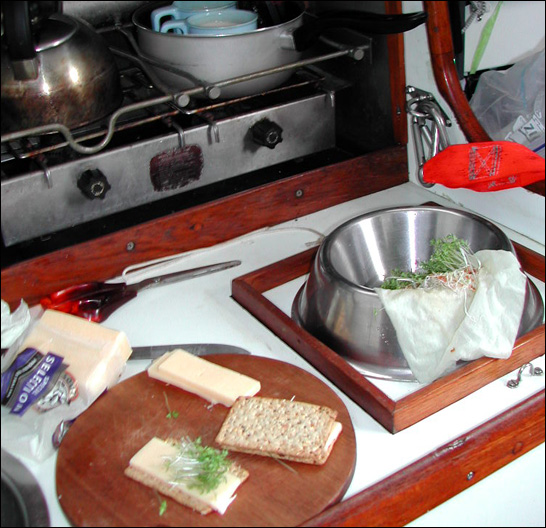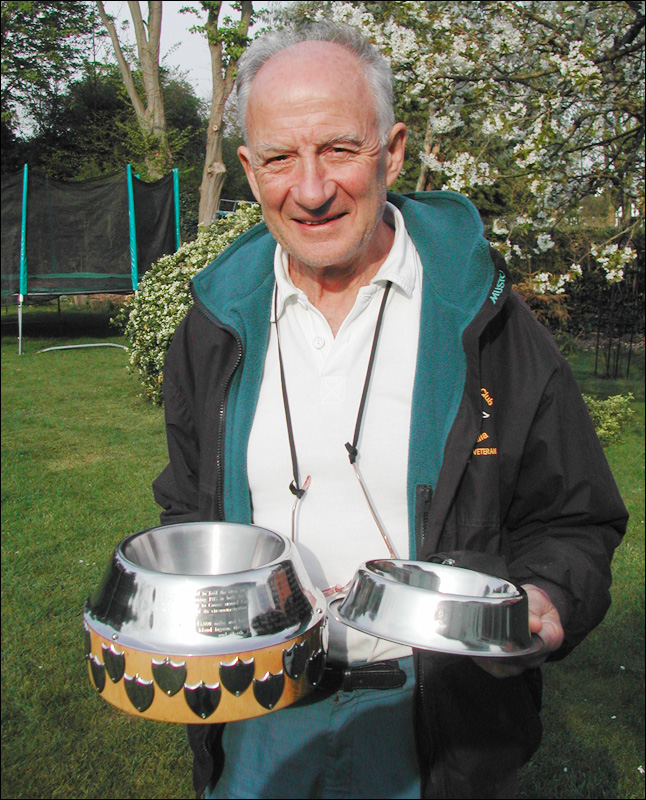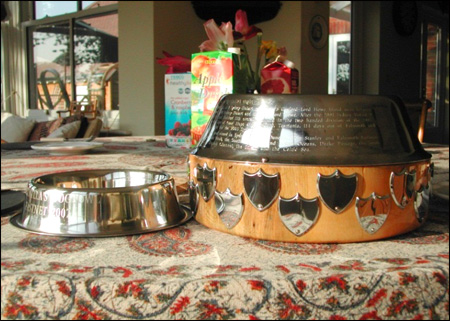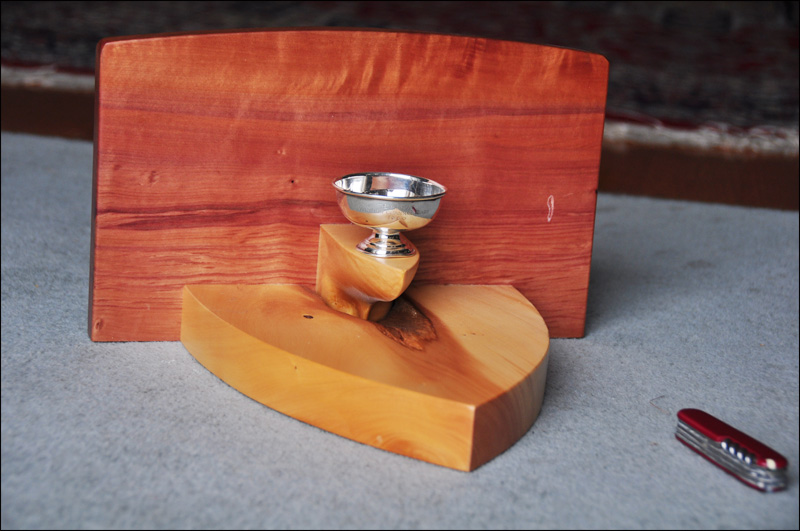Berrimilla’s crew eat out of stainless steel dogbowls because they are stable and easy to hold and to keep clean.
A couple of the dogbowls were made into trophies for the Fastnet race (UK) and the Middle Harbour Yacht Club’s Old Farts Race (Australia).
Dog Bowls: a Short Dissertation
|
Boats, especially little ones like Berrimilla, tend to crash around a lot and move in 3 dimensions. Everything has to be tied down or otherwise restrained. Every horizontal flat surface has a “fiddle” around its edge – a little wooden wall to stop things sliding off and there are special fittings for holding mugs and glasses. (Always plastic ‘glasses’ and bottles and containers – gin, olive oil etc decanted from glass into labelled plastic – broken glass in a boat is a dreadful health hazard and completely avoidable). In particularly violent pitching and rolling, ordinary plates, cups, spoons, books, spectacles laptops etc simply launch over their fiddles and fly across the boat to crash into something on the other side like my head. A normal plate or bowl is exactly the right shape to assist such a launch and they are diverted upward by fiddles. → |
 |
The Berrimilla Dog Bowl Trophy for the best double handed boat from Class 4 in the Fastnet Race.
|
There is now a Berrimilla Dogbowl Trophy for the best double hander from Class 4 in the Fastnet Race (Class 4 is the slowest group of the race according to the handicapping system ‘IRC’). The trophy is one of the original stainless steel dog bowls that was used on Berrimilla’s first circumnavigation. The smaller one in the photo is a keepsake for the winner. The base is Huon Pine from South-Western Tasmania and is between 1000 and 2000 years old. Huon Pine is resistant to rot and to most forms of marine organism. It is considered to be one of the best timbers in the world for building wooden boats. The engraving tells the story:
|
  |
The ‘Old Farts Dogs Bowl Trophy’ for the Old Farts Race at Middle Harbour Yacht Club (Australia)
|
  |
Another Fastnet Trophy linked to Berrimilla: The Spica cup, the smallest cup in all the world…
|
This little cup was the winner’s keepsake from the 1930 Channel Race. It was won by Spica, a yacht that was sailed by the owner, J.T.Hunt, and his family. The cup was inherited by Caroline Glover from an aunt, a friend of the Hunt family and she presented it to Peter and Alex after their Sydney-Hobart, Fastnet, Sydney-Hobart circumnavigation in 2005. Peter and Alex felt that the cup should perhaps go back to Royal Ocean Racing Club (RORC) as a perpetual trophy rather than sit on a shelf somewhere in Australia, so after Consultation with Caroline, a mount was made for it in Hobart from Huon Pine and Tasmanian Myrtle and the trophy was presented to RORC in 2010. In keeping with the tradition set by Spica’s owners, the trophy is to be presented to the best performed boat sailed principally by the owner’s family in a RORC Channel Race. |
 |